10 Spring Lawn Care Tips for Kenosha, Wisconsin
BY JUDITH GALLOVA | APRIL 7TH, 2023 | KENOSHA, LAWN CARE, WISCONSINWhen you see birds returning, snow melting, and the first green shoots emerging, it’s time to begin your spring lawn care. Springtime is a great opportunity to give your Kenosha lawn a fresh start after the winter season. Follow these 10 tips, and your Kenosha lawn will be lush and strong throughout the year.
In this article:
- Prepare Your Equipment
- Clean up Winter and Fall Debris
- Mow Your Lawn
- Apply Herbicide
- Test Your Soil
- Aerate
- Fertilize
- Sow Your Seed
- Check for Diseases and Insect Pests
- Water as Needed
1. Prepare Your Equipment
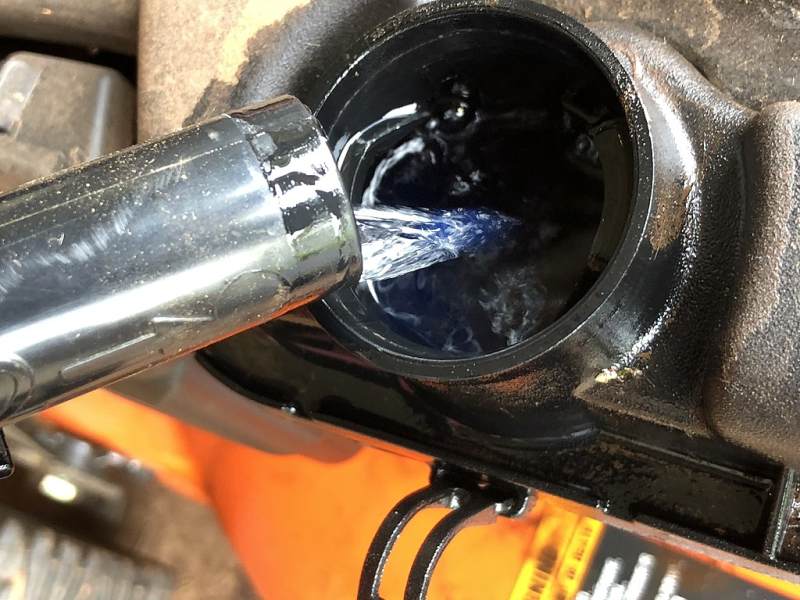
Photo Credit: Famartin / Wikimedia Commons / CC BY-SA 4.0
You need quality lawn equipment for your lawn to be healthy and look its best. Hopefully you’ve done your fall maintenance and cleaning tasks before you put your equipment away for the winter. Nevertheless, before you begin your early spring lawn care, you should make sure that your equipment is in mint condition. That includes checking off spring maintenance tasks for your lawn mower and any other equipment you use. Depending on whether you have a gas or a battery lawn mower, you’ll have different jobs to do. Battery-powered lawn mowers are typically low-maintenance compared to their gas-powered counterparts.
Before you get started, make sure you read through your manuals and understand all the steps to complete your maintenance tasks successfully. Your manuals will tell you exactly what jobs to do and how often to do them.
Examples of gas lawn mower maintenance jobs:
- Change the engine oil
- Add fresh fuel and responsibly dispose of old gasoline
- Sharpen lawn mower blades and balance them
- Check the spark plug and change it
- Clean or change the air filters
- Clean or replace the gas cap
- Adjust the cutting height; raising your lawn mower can create a healthier lawn
- Check all wheels and lubricate them if needed
Again, it’s crucial you check your manual; it will tell you all the jobs you need to do and how often to do them. To get a general idea, here’s how often you may need to do some of your gas lawn mower maintenance jobs:
| Gas Lawn Mower Maintenance Job | Estimated Job Frequency (varies based on type) |
| Engine oil change | Either every 20 to 50 hours or once per season, whichever is first; after roughly the first 5 hours for new lawn mowers |
| Fuel change | Fuel goes bad within 30 days unless you add stabilizer |
| Sharpening and balancing | Every 20 to 25 hours of use time |
| Spark plug replacement | Once a season or every 25 hours of use time, whichever is first |
| Cleaning air fillers | At least every 10 uses, may be more depending on your environment |
| Changing air fillers | Every month to every year, depending on your environment and usage |
| Lubricating the wheels | Once a month to twice every season, depending on usage |
Examples of battery lawn mower maintenance jobs:
- Change the batteries
- Sharpen lawn mower blades and balance them
- Clean all the vents
- Adjust the cutting height: raising your lawn mower can create a healthier lawn
- Check all wheels and lubricate them
Once again, it’s essential that you check your manual to know which jobs to do and how often to do them. But here’s a table to give you a rough idea of how often you may need to do some of your battery lawn mower maintenance jobs:
| Battery Lawn Mower Maintenance Job | Estimated Job Frequency (varies based on type) |
| Battery change | Between 3 and 5 years |
| Sharpen lawn mower blades and balance them | Every 20 to 25 hours of use time or twice per season, whichever is first |
| Cleaning the vents | As needed, depending on usage |
| Lubricating the wheels | Once a month to twice per season, depending on usage |
When cleaning your lawn mower, always avoid introducing water into the engine, the battery, or the internal wiring. Ensure the lawn mower is fully dry before you use it. Never pressure wash them.
Keeping your lawn equipment intact is no simple task, and the above is not an exhaustive list. To help you get everything in good working order, consider scheduling an equipment tune-up with a factory-certified repair technician.
2. Clean Up Winter and Fall Debris
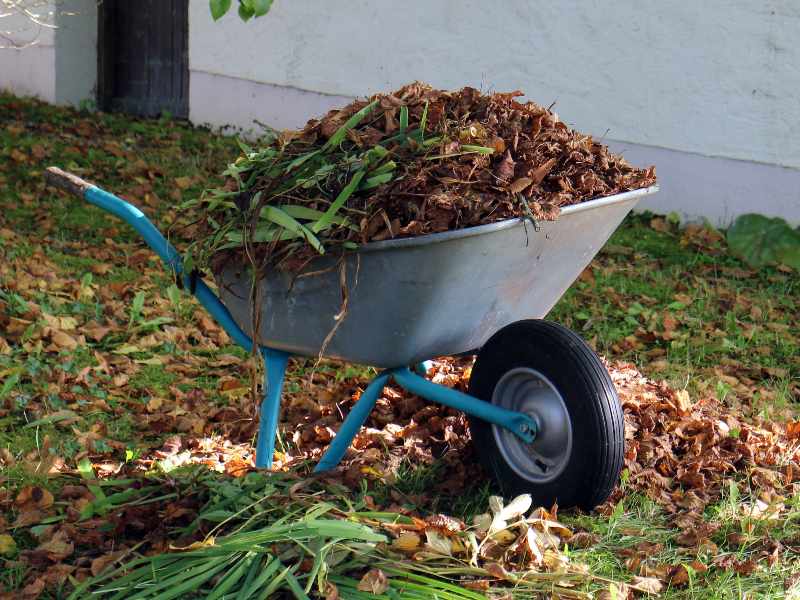
Photo Credit: Wallpaperflare
Chances are that your lawn has accumulated leaves and twigs during the winter and fall. Cleaning it up keeps debris from choking your grass and discourages pests from making their home in your lawn and garden. Removing debris can also help promote healthy growth for your plants.
Start the cleanup in March or April, or as soon as all the snow has melted. Make sure the ground is dry to avoid damaging your lawn.
Tip: You can turn debris like fallen leaves into compost to make nutrient-rich soil for your plants. You may even be able to use some of the twigs you’ve picked up for DIY projects.
3. Mow Your Lawn
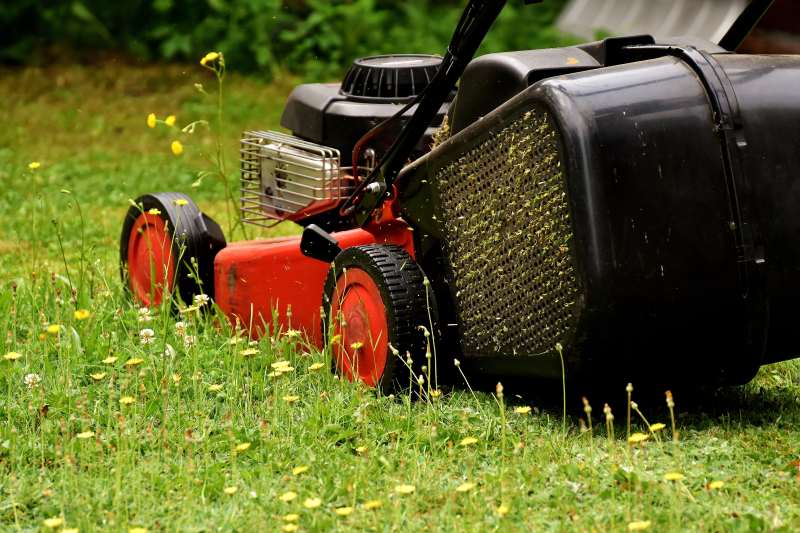
Photo Credit: Wallpaperflare
Mowing your lawn promotes healthy growth and prevents weeds from taking over. It’s best to mow when your grass reaches about three inches in height, which could be by April. Don’t mow your lawn two to three days before you apply herbicide or three to four days after. In May, you can also use light grass clippings as a natural fertilizer by leaving them on your lawn after mowing. They help improve soil health and reduce the need for chemical fertilizers.
Here are a few rules to follow before you start mowing:
- Make sure not to mow grass that’s wet or dewy; wet grass is hard to cut and can even clog or damage your lawn mower
- Follow the ”one-third rule”: don’t cut more than one-third of your grass blade per mow to avoid scalping your lawn
- It’s good to leave grass clippings on the lawn, but don’t leave too much. A buildup of clippings forms a dense mat of thatch that can suffocate the grass and hinder its growth
Your ideal grass height will vary based on your grass type. Here are the best grass types for Kenosha with their recommended heights:
| Grass Type | Recommended Mowing Height |
| Kentucky bluegrass | 2.5–3 inches |
| Perennial ryegrass | 1.5–2.5 inches |
| Fine fescue | 1.5–3 inches |
| Turf-type tall fescue | 2–4 inches |
4. Apply Herbicide to Your Lawn
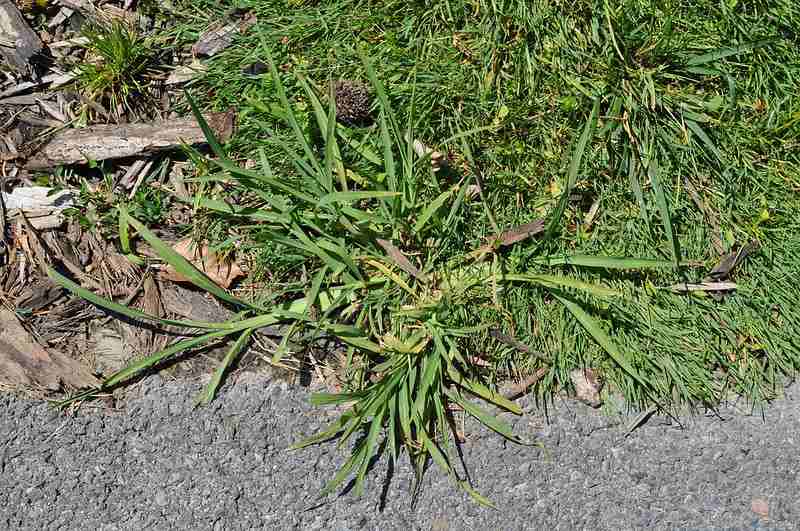
Photo Credit: NY State IPM Program at Cornell University / Flickr / CC BY 2.0
If you want a healthy lawn, dealing with weeds is unavoidable. Some of the most common weed types include:
Before you apply herbicide, you should learn about the different types:
- Pre-emergent herbicides put a chemical barrier on the surface of the soil. The chemical barrier stops weeds from growing. These herbicides usually last between three and five months. You should apply your pre-emergent herbicide before weeds have a chance to germinate.
- Post-emergent herbicides kill weeds that have already sprouted. You can apply a post-emergent herbicide later in the season when weeds have already started to grow.
There’s more. Pre-emergent and post-emergent herbicides come in two varieties:
- Selective herbicides target only specific weeds.
- Non-selective herbicides are stronger and kill any plant they come into contact with.
Before you apply a pre-emergent herbicide, make sure that the soil has been between 50 and 55 degrees for several days. Mid-to-late April should be a good time to use a pre-emergent herbicide.
The best temperature for applying a post-emergent herbicide is between 65 and 85 degrees Fahrenheit. But it may not always be possible to apply your herbicide at these temperatures. You can apply burndown herbicides at temperatures between 40 and 60 degrees Fahrenheit, but your weed control will be slower.
To measure your soil temperature, stick a thermometer two inches below the soil.
Note: Don’t use herbicides on newly seeded areas because they can stop the growth of desired plants. Before you apply your herbicide, wait two to three days after mowing. If you haven’t mowed yet, wait three to four days after you apply your herbicide. Don’t irrigate your lawn 24 hours after your herbicide application.
Furthermore, if you prefer to avoid chemicals, you can remove your weeds manually or look into organic alternatives. Again, though, keep in mind that non-selective alternative herbicides will kill all plants, not just the weeds.
Remember to maintain a healthy lawn with proper watering and mowing, which can also help prevent the growth of weeds.
5. Test Your Soil
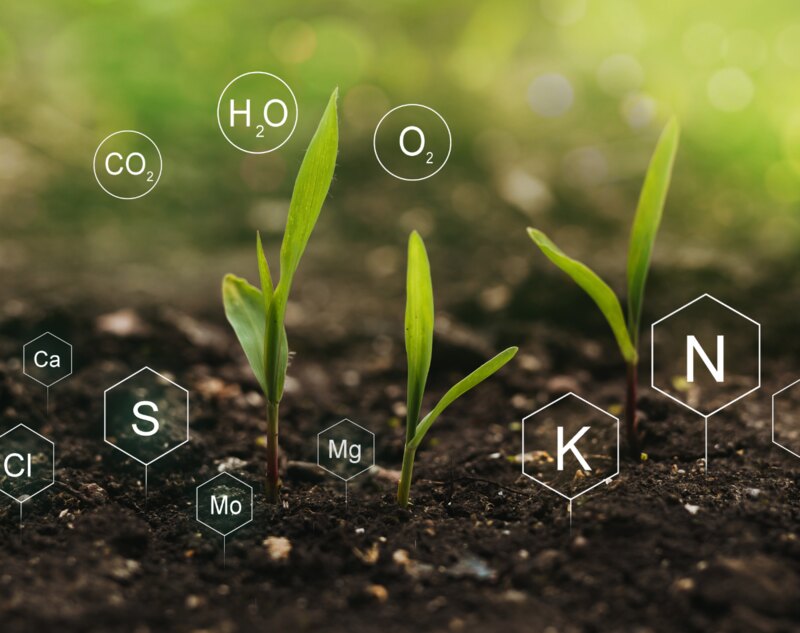
After winter, your soil may not have enough nutrients and need amendments like phosphorus, lime, and magnesium to make it better. Spring is the perfect time to find out how healthy your soil is and what nutrients it needs to support healthy lawn growth.
If you want to know if your soil is missing any important nutrients, you can test it. This will help you choose the right type of fertilizer and ensure that your lawn or garden is getting the nutrients it needs to thrive. You can buy a testing kit to conduct a DIY soil test yourself or buy a detailed report from the University of Wisconsin Soil and Forage Laboratory.
6. Core Aerate Your Lawn
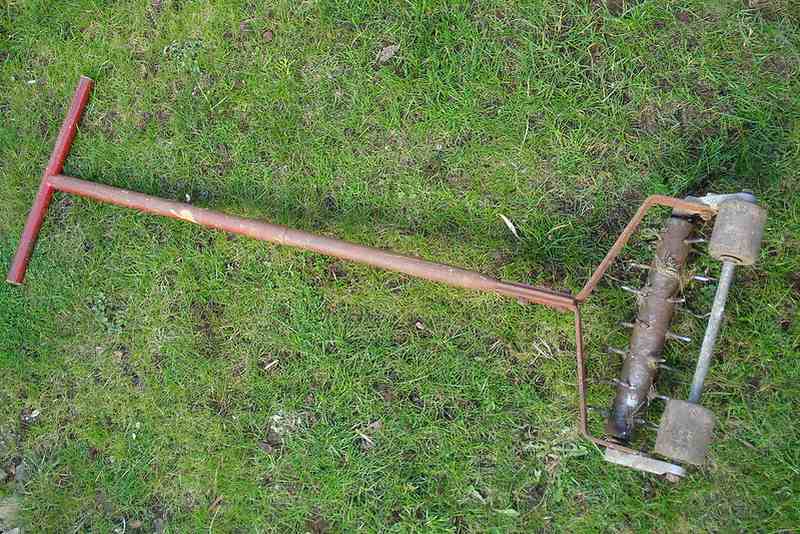
Photo Credit: allispossible.org.uk / Flickr / CC BY 2.0
Don’t underestimate the value of aeration; it can save your grass. During the winter, snow and cold weather can compact the soil together. Compacted soil can cause your grass to suffer or even die. So in the spring, it’s time to aerate your lawn to allow air and water to reach the roots of your grass so that it can grow.
Aeration is done by poking hundreds of holes into your soil. You can buy tools to do it yourself or contact a Kenosha professional. Fertilization and seeding should come right after aeration, if possible. The best spring month to aerate your lawn in Kenosha is late May. You should also aerate in the early fall, between September and early October.
7. Fertilize Your Lawn
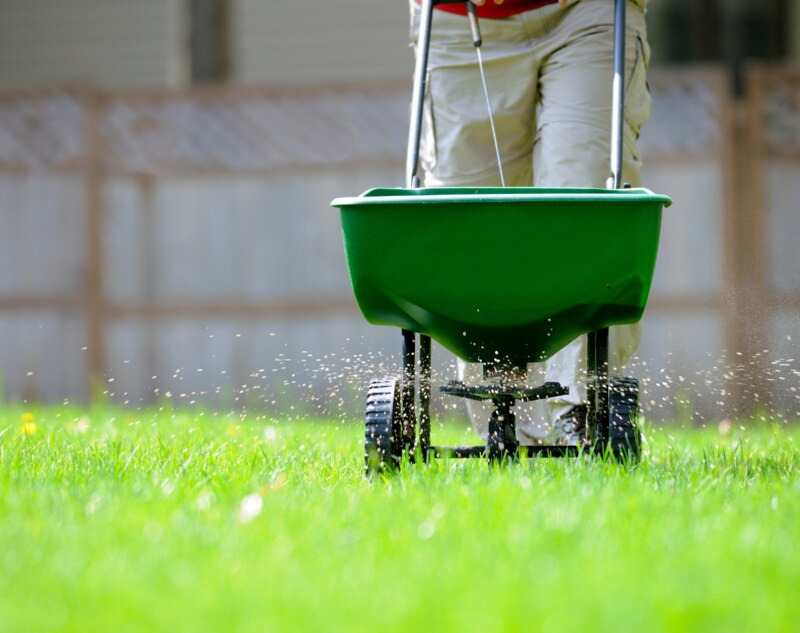
Photo Credit: groveb / Canva Pro / License
You can fertilize your lawn around the end of May to help it thrive throughout the summer. It’s best to fertilize your lawn after you aerate. Use the label rate of fertilizer for grass that’s growing in the sun, and half the label rate for grass growing in the shade.
Fertilizers come in two different formulations: controlled-release formulation and low-release formulation. Slow-release fertilizers are recommended because they keep you from using too much or too little fertilizer. Excessive application incurs extra costs. It can also cause nutrient runoff and diseases that are bad for the environment.
If you want to avoid using chemicals on your lawn where possible, there are alternative options, too.
8. Seed Your Lawn
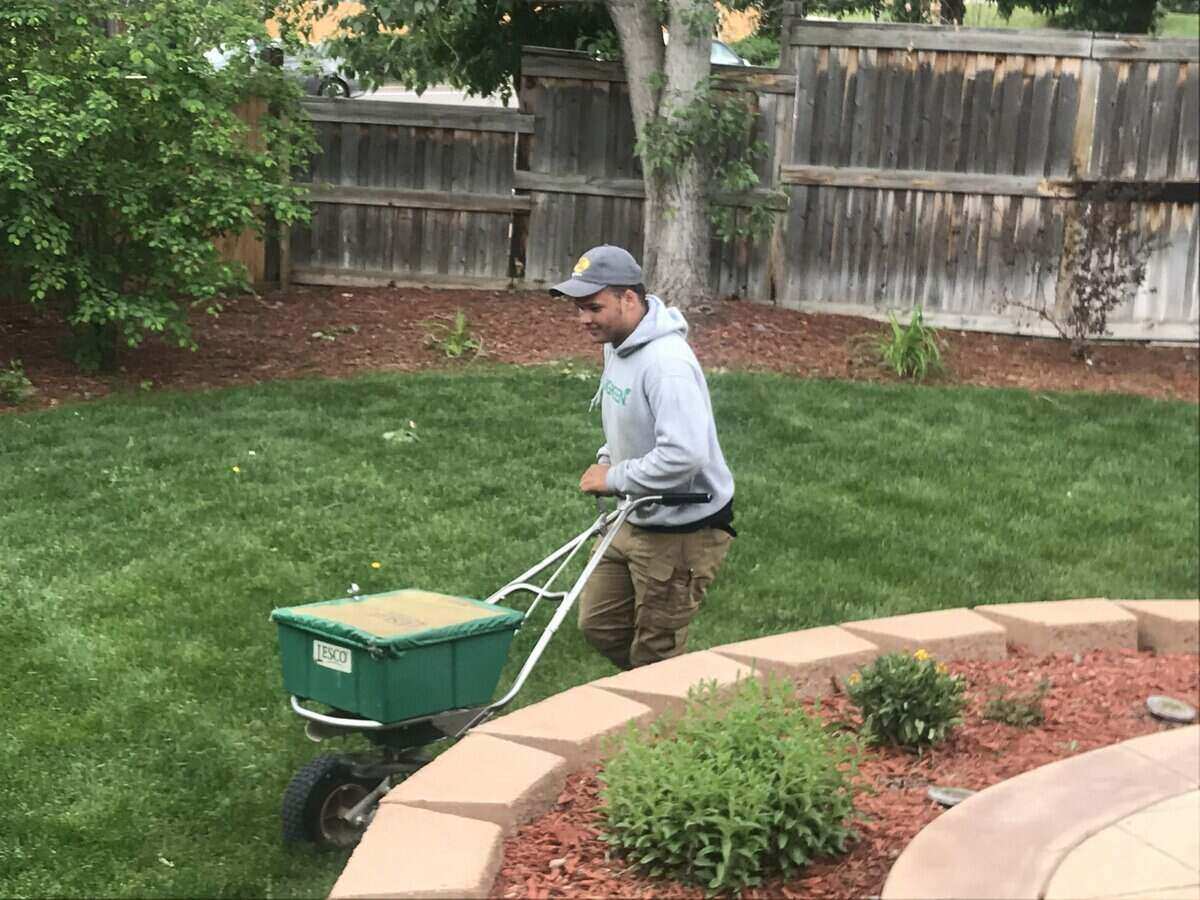
Photo Credit: Brenda Ryan / Wikilawn
You may want to plant grass seeds for a new lawn or overseed an existing one to help it grow thicker and healthier. Fall is the ideal time to plant grass seeds in Kenosha because you’ll be planting cool-season grasses. But planting seeds in the spring can work too, and it might even be necessary after a harsh winter. Just don’t wait until it’s too late to make sure that your grass has enough time to germinate before the weather becomes too warm.
Normally, it’s best to seed and fertilize your lawn after you aerate so that the seeds can easily reach the soil, establish roots, and grow. As mentioned above, the right time to aerate your Kenosha lawn in the spring is late May. In Kenosha, June temperatures are usually below 79 degrees Fahrenheit, so there should be enough time for most grass types to germinate. But some grasses take longer to germinate than others.
Here are the best temperatures for seed germination of typical Kenosha grasses, along with typical germination times (under favorable conditions):
| Grass Type | Ideal Germination Temperature | Typical Germination Time |
| Kentucky bluegrass | 59–86 degrees Fahrenheit | 10–21 days |
| Perennial ryegrass | 68–86 degrees Fahrenheit | 5–14 days |
| Fine fescue | 59–77 degrees Fahrenheit | 5–12 days |
| Turf-type tall fescue | 68–86 degrees Fahrenheit | 7–21 days |
The alternative option is to plant your seeds in April when the weather is milder. Other than that, you can also plant your seeds in the fall.
Furthermore, if you want to plant new plants this season or turn your lawn into a garden, there are also a few things to consider. Make sure to prepare the soil and choose the right plants for your climate conditions and personal preferences. You’ll also want to research your plants’ needs to take care of them properly.
Consider getting native plants, as they tend to be more resilient and need less maintenance. They also draw in beneficial wildlife.
9. Check for Diseases and Insects
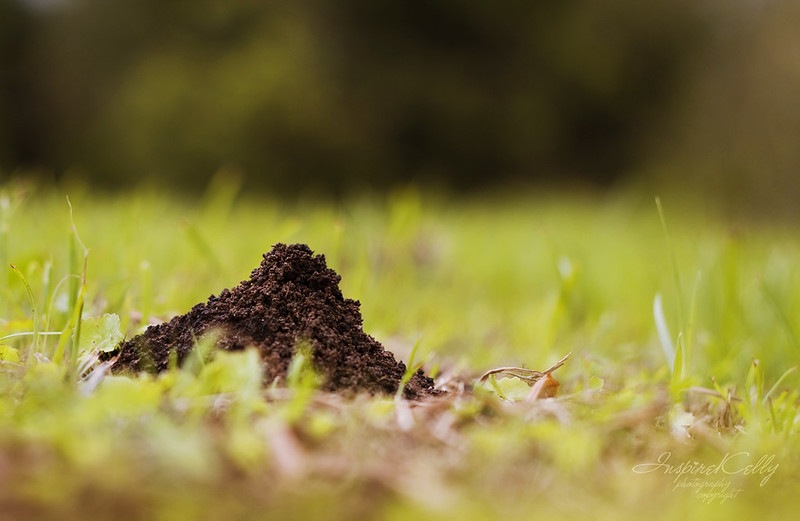
Photo Credit: Kelly Hunter / Flickr / CC BY 2.0
Even if you take great care of your lawn and garden, it’s important to regularly check for diseases and insect pests that can damage them. Early detection and treatment can prevent further damage and help your yard thrive.
There are different lawn diseases and insect pests out there. Become familiar with their symptoms. If you spot any, make sure you deal with them as soon as possible.
Common spring insect pests include, but aren’t limited to:
Common turfgrass fungal diseases include, but aren’t limited to:
10. Water as Needed
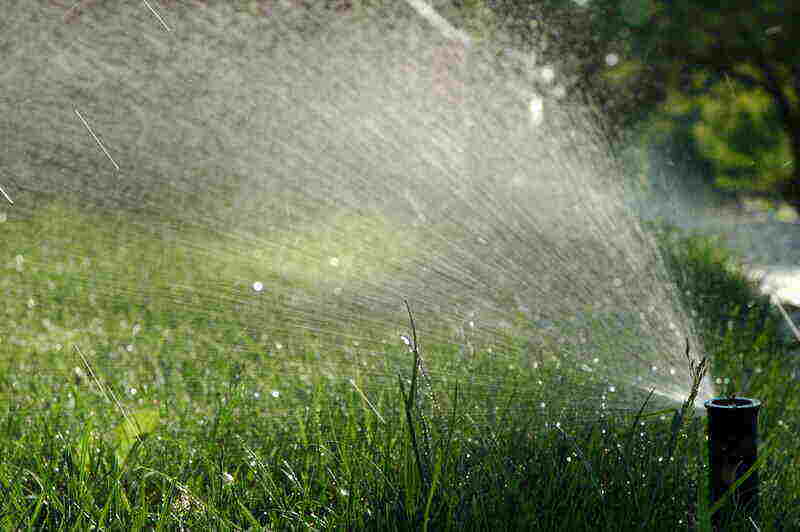
Photo Credit: UBC Micrometeorology / Flickr / CC BY 2.0
Make sure that you water your lawn appropriately based on its needs and your weather conditions. Overwatering can lead to fungal diseases and insect pests and can suffocate your grass and plants. On the other hand, an under-watered lawn can also struggle and die.
In spring, the night frost will subside and your grass will begin to dry out. The amount of water your lawn needs depends on your soil and grass types. Generally, though, grass needs around 1 to 1.5 inches of water per week. Take note of how much rainwater your lawn receives each week and water it accordingly.
Keep Your Lawn Green and Healthy
The tips in this article should help you get started on your spring lawn care. But keep in mind that different grass types have various care and maintenance needs. Learn about the best grass types for Kenosha and choose the one that best fits your needs and preferences. If you want to add plants to your lawn, consider adding native plants because they need less maintenance and are better for the environment.
Spring maintenance is not the only work your lawn needs. You should take care for your Kenosha lawn all year round. Of course, you might not be able to spend all this time making sure that your lawn stays beautiful and healthy. If that sounds like you, consider hiring a professional lawn care service to take care of your grass for you.
Main Photo Credit: Urban J. Lewis House in Kenosha / Teemu08 / Wikimedia Commons / CC BY-SA 3.0